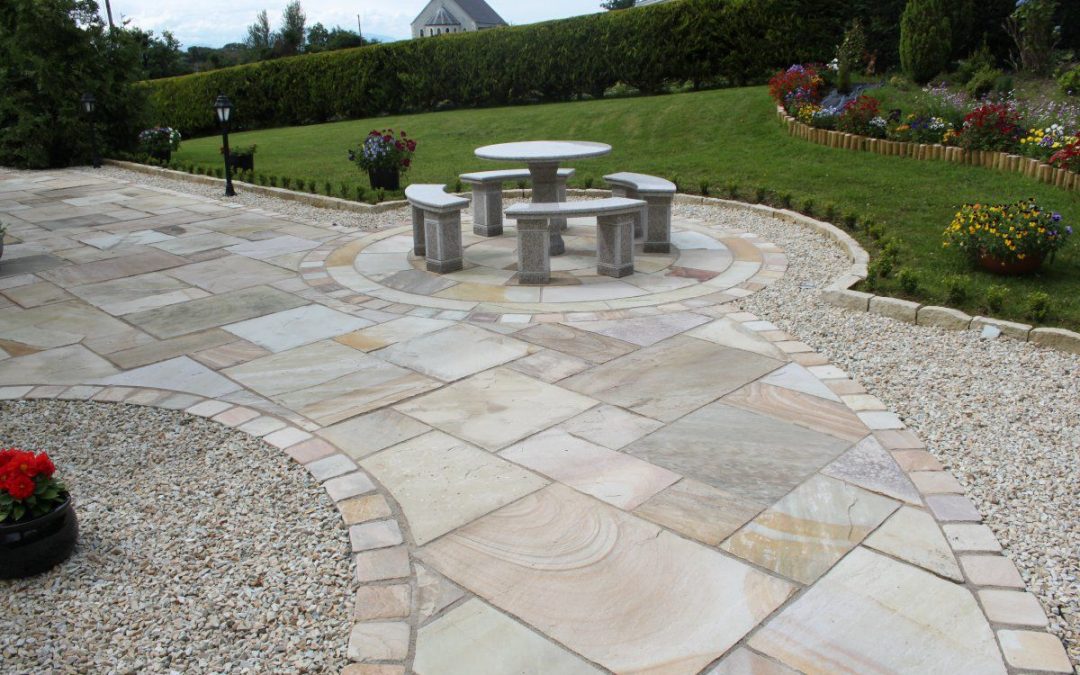Sandstone paving is perhaps one of the most popular types of paving stones used on the market. Not only are they extremely adaptable to any location, but they also have an elegant natural feel and can add a lot of style and class to your home or garden. Sandstone pavers are available in various sizes, colors, and finishes, making them ideal for any application.
One of the best things about pavers made from sandstone is that they’re very versatile. This means you can use the stone in so many different ways, resulting in so many different looks, which you can then be proud of. Sandstone comes in such a wide array of colors and styles, with a beautiful subtle combination of earthy tones running throughout it. So, for instance, no two sandstone paving blocks will ever look the same, creating a beautiful subtle tone for your outdoor applications. You can also mix and match the stone blocks to create interesting textured designs that blend well with other garden features such as trellis work or planters.
To maximize sandstone paving’s versatility in your outdoor applications, however, you need to ensure that the block’s color and texture are right for the application. For instance, sandstone pavers are ideal for most water features and feature locations where you want something with a slightly more natural feel and tone. However, if you’re applying the stone in the face of a water feature, you may want to opt for a slightly lighter stone that’ll complement the setting rather than compete with it. It’s also important to choose the block’s size and the roughness of it correctly for the best possible finish and weathering.
If you have decided that sandstone paving is right for your driveway, patio, or garden, then you’ll probably be ready to start laying it down. Luckily, there is a simple way to help here to make things go much easier. In this simple-to-follow comparison article, you will learn the major difference between sandstone paving and limestone paving (the two most common natural stone paving slabs) in only minutes. It’s time to get down to business.
Limestone Paving
There are a few different reasons why people choose sandstone paving for their driveway or patio. One reason is that compared to limestone or marble, Indian sandstone paving is less expensive. And, of course, limestone or marble is beautiful to look at, but it will cost you an arm and a leg to have it installed. On top of that, limestone or marble is porous, so you will commonly find water seeping through and possibly staining your stones, which can also make them difficult to clean. Depending on the driveway’s size, it can take weeks to create enough pressure to drive in all of the sand to have it bond with the loose dirt.
Sandstone Paving
Once you decide that Indian sandstone paving is the right choice for your paving needs, it is time to start thinking about how you will apply it. This type of stone is naturally darker than most natural stones, so applying a colored sealant is often required to make it appear as nice as it did when it was newly laid. Since sandstone is quite porous when it first comes out of the ground, the sealant must be applied very slowly and let dry completely before applying more. Once you see that the color has completely set, you can put another coat on top to further protect the newly added color.


